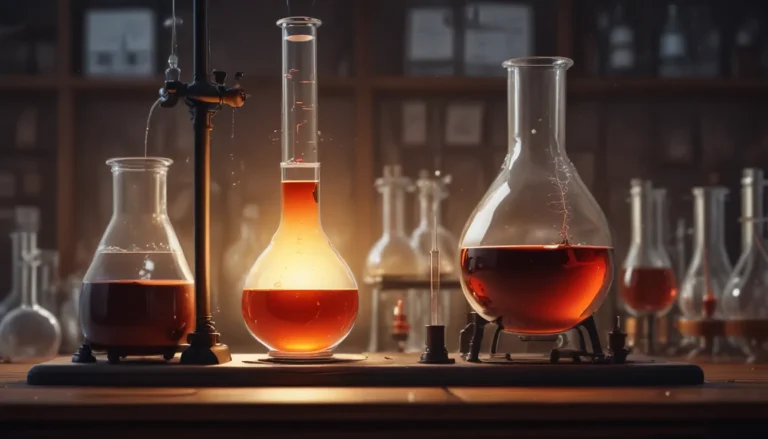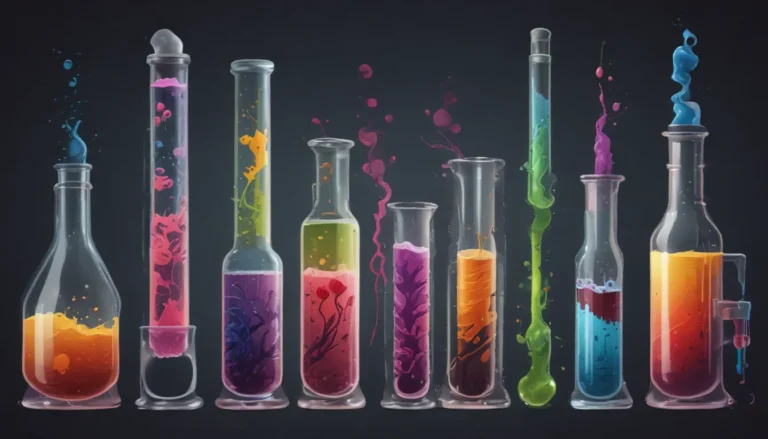A Note About Images: The images used in our articles are for illustration purposes only and may not exactly match the content. They are meant to engage readers, but the text should be relied upon for accurate information.
Chemistry enthusiasts, rejoice! The world of standard state beckons, offering a realm of knowledge that enhances our understanding of chemical processes. As we embark on this journey, let us unravel 11 fascinating facts that illuminate the significance and application of standard state in the field of chemistry. From its pivotal role in determining enthalpy and entropy values to its influence on phase changes, prepare to be captivated by the essential role that standard state plays in our exploration of chemical interactions.
Delving into the Depths of Standard State
Picture this – a chemistry reference point that acts as a universal language for scientists to compare and understand substances effortlessly. This reference point, known as the Standard State, is instrumental in measuring and comprehending the behavior of various compounds under uniform conditions. It serves as a cornerstone for unraveling the thermodynamic and equilibrium properties of substances, laying the foundation for intricate chemical analyses.
The Significance of Standard State in Chemistry
At the core of various branches of chemistry, including thermodynamics, kinetics, and equilibrium, lies the concept of the Standard State. This fundamental concept provides a framework for benchmarking and comparing the physical and chemical properties of substances under standardized conditions. By establishing a common ground for analysis, the Standard State facilitates accurate measurements and insightful comparisons across diverse chemical landscapes.
Unveiling the Standard State Conditions
Imagine a temperature of 298 Kelvin (25 degrees Celsius) and a pressure of 1 atmosphere (atm) – these are the hallmark conditions of the Standard State. By adhering to these standardized parameters, chemists ensure consistency in their comparisons and pave the way for a nuanced understanding of substances’ behavior under controlled environments.
Deciphering Standard State for Various Phases
When it comes to gases, the Standard State encapsulates the state of a gas at a specific temperature and pressure, typically set at 1 atmosphere. This reference point allows for the determination of the Standard Molar Volume, providing insights into the behavior of gases under standardized conditions. As for solids and liquids, the Standard State entails the pure substance at a specific temperature and pressure, enabling comparisons of properties such as density, melting point, and boiling point with precision.
Unraveling the Complexity of Standard State Entropy
Enter the realm of Standard State Entropy (S°), a metric that gauges the disorder or randomness of a substance in its standard state. This measure offers valuable insights into the stability and behavior of substances under standard conditions, shedding light on the intricate interplay of chemical elements within a defined framework.
Applications Galore: From Chemical Reactions to Electrochemistry
The relevance of the Standard State extends far and wide, permeating into the realms of chemical reactions, electrochemistry, and acid-base equilibria. By serving as a cornerstone for determining standard enthalpy change (?H°), standard entropy change (?S°), and Gibbs free energy change (?G°), the Standard State aids in deciphering reaction spontaneity and equilibrium dynamics. Furthermore, in electrochemistry, it acts as a pivotal reference for measuring electrode potentials and unravelling the mysteries of electrochemical cells’ overall potential. In acid-base equilibria, the Standard State conditions play a crucial role in defining the standard state concentration of hydrogen ions (H+) or hydroxide ions (OH-), enriching our understanding of acidic and basic properties.
Unlocking the Secrets of Standard Reduction Potentials
Step into the world of standard reduction potentials, where the Standard State acts as a guiding light for determining the reactivity of substances in electrochemical cells. By leveraging these reduction potentials, scientists gain valuable insights into substances’ relative reactivity and their propensity for undergoing reduction, illuminating the complexities of electrochemical processes.
A Beacon of Consistency in Scientific Measurements
In the realm of scientific research, consistency is key. The application of the Standard State ensures harmonization and comparability in scientific measurements and calculations. By providing a standardized reference point, it promotes accurate data analysis, fosters uniform reporting standards, and catalyzes collaboration and understanding across various research endeavors.
Embracing the Essence of Standard State: A Journey of Discovery
As we conclude our exploration of standard state, it becomes evident that this fundamental concept forms the bedrock of chemical analyses and inquiries. By understanding the nuances of standard state, we equip ourselves with a powerful tool to navigate the complexities of chemical processes with precision and insight. For chemistry enthusiasts and students alike, embracing the essence of standard state unveils a world of possibilities, where knowledge intertwines with curiosity, and discovery awaits at every turn.
FAQs: Navigating the Terrain of Standard State
Q: What is the definition of standard state in chemistry?
A: The standard state in chemistry refers to the defined set of conditions used as a reference point for measuring and comparing the properties and behavior of substances. It typically includes a specific temperature, pressure, and concentration.
Q: Why is the concept of standard state important?
A: The concept of standard state is important because it allows for consistent comparison and analysis of different substances. By establishing a baseline set of conditions, scientists can accurately determine how substances will react or behave in different situations.
Q: How does standard state affect equilibrium constants?
A: The equilibrium constants, such as Kc and Kp, are determined using the concentrations or pressures of reactants and products at the standard state. These constants provide insights into the extent of a chemical reaction and are influenced by temperature and pressure conditions.
Q: Can the standard state vary for different substances?
A: Yes, the standard state can vary depending on the compound or reaction being studied. For example, the standard state for gases is typically defined at 1 atmosphere (atm) pressure, while for aqueous solutions, it is often defined at a concentration of 1 mole per liter (1 M).
Q: How is standard state represented in chemical equations?
A: Standard state is indicated by placing a superscript “o” (°) symbol next to the chemical formula or symbol. For example, H2O (l) represents liquid water at the standard state, while H2O (g) represents gaseous water at the standard state.
As we bid adieu to the realm of standard state, let us carry forth the torch of knowledge and embark on further explorations in the vast landscape of chemistry. May the insights gleaned from our journey illuminate new pathways of understanding and curiosity, guiding us towards a deeper appreciation of the intricate dance of chemical elements in the universe.






